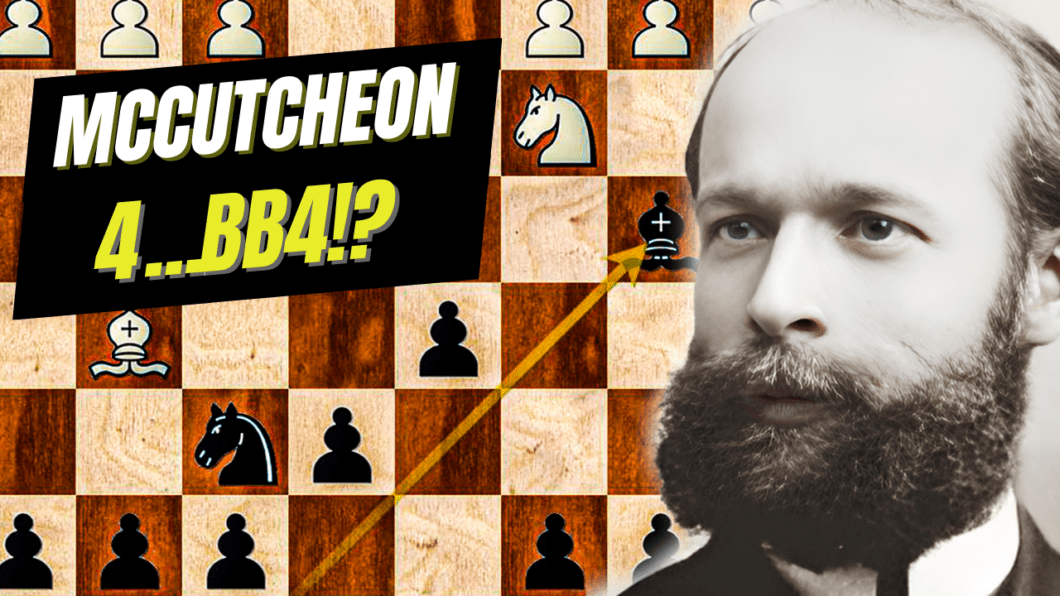This article is part of a series of articles covering different Opening Variations. You can find the complete list of Openings/Variations covered on the following link.
Introduction
After introducing the Classical Variation of the French Defence in a previous article, today we are going to continue are explorations of the variation with 4.Bg5 and analyze a very combative, sharp, and critical response – 4.Bb4 – leading to the so-called McCutcheon Variation of the French Defense.
McCutcheon Variation of the French Defense
Overview and main ideas
As mentioned above, the McCutcheon Variation is a line that can arise in the Classical Variation of the French Defense via the move order 1.e4 e6 2. d4 d5 3. Nc3 Nb4 4. Bg5 Bb4!?. According to some sources, it was named after a relatively unknown American player John Lindsay McCutcheon, who used it to defeat the World Champion Wilhelm Steinitz in the Simultaneous Exhibition in 1885:
At first glance, it looks as if this move loses a piece due to the advance of the e5 pawn, but it is not really the case, as elaborated below:
Thus, instead of advancing the pawn or trying to maintain the pin with 6.Bh4, White most commonly retreats the bishop along the c1-h6 diagonal. Actually, it transpires that three out of four retreats – to e3, c1, and d2 are very much possible and we will examine each and every one of them in turn.
White plays 6. Be3
First of all, White can try to retreat the bishop to e3. This seems like a very natural retreating move, placing the bishop on a square where it is defending the d4 pawn and also hindering the c5 pawn push. However, the drawback of this move is that it doesn’t defend the knight on c3, allowing Black to jump in immediately with 6.Be3 Ne4.
Furthermore, there are also some nuances due to which it may be worth considering the bishop to c1 instead of e3 – in a very specific line, it may turn out to be surprisingly relevant.
It is hard to explain it all in words, so let’s rather check the next chapter of our study:
White plays 6.Bc1
As mentioned above in my analysis of 6.Be3 – if White doesn’t intend to defend the knight on c3 with the bishop on d2, then going back to c1 might be worth considering. Not only does the bishop keep the option of potentially going to a3 in the future if Black takes on c3 – but there is also a very specific point in a very specific variation that showcases how having the bishop on the back rank can be useful, as follows:
White plays 6.Bd2
Last but not least, this “obvious” move, defending the c3 knight and breaking the pin, is the most common move in this position. It is not as aggressive and combative as 6.Be3 or 6.Bc1, but it is still nevertheless very ambitious and provides White with good chances of playing for the advantage.

